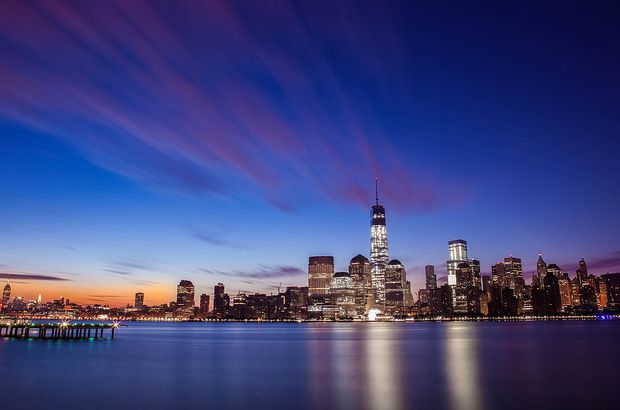
This article is part of The Road through Paris, a series leading up to the COP21 international climate talks in December. It is also the first in an eight-week blog series from New Energy Cities detailing the state of the low-carbon city movement.
In December 2015, international leaders will gather in Paris for what are arguably the most important global climate talks ever. Countries are updating their carbon reduction pledges, which currently fall far short of what is necessary to hold global warming at two degrees Celsius. This represents an ambition gap among national negotiators that the bold climate leadership of city officials around the world can help close.
Cities represent over 70% of global energy-related carbon emissions, and are home to 54% of the world’s population. Over the past decade, to chart the path to a low-carbon future, local officials have set bold climate and clean energy agendas, exerted political power to achieve those agendas, and worked individually and collectively on durable, meaningful carbon reduction solutions.
Leading cities around the world have already cut carbon emissions:
- From 2005 to 2014, Copenhagen, Denmark’s overall carbon emissions declined over 30%, while its population increased over 10%. Copenhagen’s per capita emissions also decreased 40% in the past 10 years.
- As of 2010, Berlin, Germany reduced its energy-related carbon emissions 27% from 1990 levels.
- Portland, Oregon reduced carbon emissions 14% since 1990, while its metropolitan area grew by 150,000 people and added 75,000 new jobs.
- At least 17 U.S. cities—including large cities like Atlanta, New York City, San Francisco, and Philadelphia—had reported measurable reductions in community-wide carbon emissions from 1990 to 2006, according to a 2014 report from the Center for Climate Protection.
These reductions are meaningful when tallied globally, and yield significant additional benefits:
- In September 2014 Stockholm Environment Institute analysis found that cities can collectively reduce emissions by at least 10% beyond what national actions are on track to achieve by 2030. (Former New York City Mayor Michael Bloomberg wrote that this amount is roughly equivalent to reducing the world’s coal consumption by a quarter.)
- The United Nations Environment Programme similarly concluded that city initiatives could contribute to closing the global emissions reduction gap between current levels and what is necessary to stop warming at two degrees Celsius, the limit that international experts consider to be necessary for avoiding dangerous climate change.
- World Wildlife Fund (WWF) and ICLEI found in Measuring Up 2015 that 116 U.S. cities meeting their carbon reduction targets would equate to closing 86 coal-fired power plants each year.
- A New Climate Economy 2015 report found that local climate actions in buildings, transportation, and waste management could save between $16.6 trillion in the period from now to 2050, concluding that investments “would pay for themselves within 16 years.” The same report found that with national support for city efforts, savings could reach $22 trillion, and the planet could avoid emissions on the scale of India’s current carbon footprint.
Since 2009 Climate Solutions’ New Energy Cities program has advised and partnered with communities across the U.S. Pacific Northwest on taking steps to achieve deep carbon reduction as well as written about leading global examples of urban clean energy innovation. With this blog, we are launching a series of seven posts as follows:
- Cities Setting the Pace—how cities set ambitious but achievable agendas and goals of carbon neutrality, 100% renewable energy, and beyond.
- Urban Carbon Reduction Know-How—how cities develop expertise on how to achieve their goals and transition to clean energy, with what partners, and in what sequence.
- Tools of the Trade—how cities identify the local authorities that they need to do the work, with existing tools as well as expanding beyond their conventional roles.
- Partnering for Powerful Action—the recent explosion of city collaboration with national and state levels of government, other jurisdictions in geographic clusters, and peer-to-peer networks.
- Unlocking Funding to Accelerate Climate Action—how cities work to secure dedicated funding, a critical ingredient for sustained, effective action and perhaps the most persistent barrier that cities face today.
- Building Diverse Coalitions beyond Climate—how cities align climate agendas with other community and political priorities, to gain the backing of broader political coalitions beyond traditional allies.
- What’s Next for the Low-Carbon City Movement—our conclusions about next steps in the evolution of the low-carbon city movement.
During the first week of the United Nations Climate Change Conference in Paris, we will release these blog posts in a paper that summarizes the state of play of the low-carbon city movement and describes a rich array of best practices for cities to achieve deep carbon reduction.
The international climate talks in November and December 2015 are a clear milestone for the planet regarding whether and how we will stave off the worst impacts of climate change. For cities, the talks represent an opportunity to share the firsthand knowledge that deep carbon reduction is ambitious but achievable, and indeed that it is already underway.




